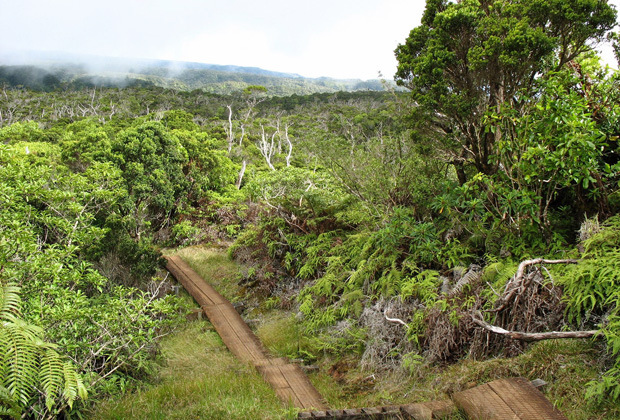La Niña is not helping Hawaiʻi’s rainfall and groundwater
 La Niña events no longer bring excess rainfall to Hawaiʻi. (Photo of Alakai Swamp, Kaua‘i, courtesy of Wikimedia Commons.)
La Niña events no longer bring excess rainfall to Hawaiʻi. (Photo of Alakai Swamp, Kaua‘i, courtesy of Wikimedia Commons.)Historically when El Niño events occur, Hawaiʻi has experienced nearly six months of drought, from November to April. Conversely, during La Niña events rainfall has been greater than normal, building up Hawaiʻi’s groundwater supply. New research published this month in the Journal of Climate by scientists at the University of Hawaiʻi at Mānoa, Nanjing University of Information Science and Technology and NOAA’s Honolulu National Weather Service (NWS) Office, determined that the relationship between La Niña and rainfall in Hawaiʻi has changed and recent La Niña years have brought less-than-normal rainfall. Because the La Niña events have brought excess rainfall to the state in the past, the new information indicating decreased rainfall during recent La Niña events has important implications for agriculture, water resource management and more.
“Initially, this changing relationship between La Niña and Hawaiʻi rainfall was brought to my attention by Kevin Kodama [co-author of the paper and hydrologist at NOAA’s Honolulu NWS],” said co-author Pao-Shin Chu, professor of Atmospheric Sciences and Hawaiʻi state climatologist. “However, we had no idea when this shift occurred, nor any comprehensive analysis to understand the mechanisms for this change.”
Read more about it in the UH System News, Raising Islands, and KHON2.



